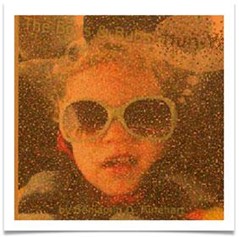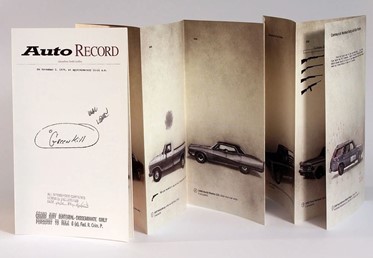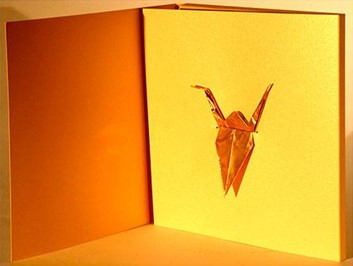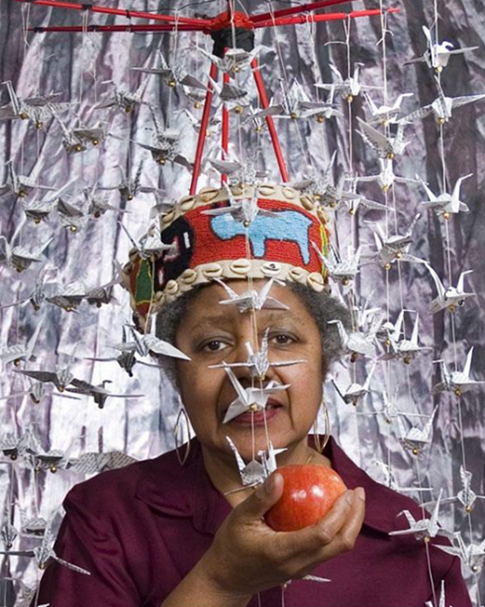As with any special collections library, we have certain subject areas that we focus on and our Artists’ Books Collection is one of those collecting areas. Since we began as a women’s college, many of our collections are related to women’s history, literature, and social issues. We also have our Women Veterans’ Historical Project collection, poetry, history of physical education and dance, local or regional history, and many other collections. The Artists’ Book Collection may include books that overlap many of our other collecting areas, such as an artist’s book created by a North Carolina artist or a book about social issues impacting women.
You might wonder, “What is an artist’s book?” There are dozens and dozens of definitions out there for artists’ books, but this one sums it up nicely:
Simply, stated, artists’ books are works of art in book (or book-like) form. An artists’ book may be a unique, one-of-a-kind piece but it might also be produced in an edition. It may be letterpress printed using handset metal type or photopolymer plates, but it might also be printed offset, mimeographed, photocopied, written by hand, or created using online self-publishing companies. It might incorporate unusual materials like soap, food, or LEGOS. Sometimes it’s produced as a codex and will look like a book, but it might also be a scroll, set of computer punch cards, or sculptural piece. This wide variety of form makes a single definition hard to come by but in almost every case, the appearance and production of the work is determined by the artist. (Otis College of Art and Design, 2021)
Artists’ books can be in codex form – that is probably what you think of when you think of a book–folded pages, attached at the spine, and bound into a cover of some sort. However, they can be sculptural or one of many different varieties of book structures.
We regularly use our collections through our teaching and outreach programs. At the heart of what we do is our mission to promote learning and research, so teaching classes or workshops allows us the opportunity to highlight resources like the Artists’ Books Collection. And artists’ books are often an immediate draw for students – they have a built-in “wow factor” due to their unique structures and content as well as providing one more tool for connecting with students and supporting their education.
Our Artists’ Books Collection Development Team has been working on a project to diversify the authors and artists, as well as the subject matter, represented in our collection. Through a recent collection inventory, we were able to identify a few of the strengths of the collection as well a few of the gaps. There are several artists who are well represented in the collection, such as Amos Paul Kennedy, Ed Hutchins, Lois Morrison, and Morris Cox, among a few others. As for binding method or structure, accordions, miniature books, pamphlets, case bindings, sculptural, and toy and movable books are well represented. The most represented printing methods were letterpress and offset. However, there were very few artists of color represented in the collection. Likewise, we recognized a need to promote the voices of marginalized populations through the collection by including more subject matter related to the LGBTQ+ community, people with disabilities, or members of the Black, Indigenous, or People of Color communities. We are excited to announce that we have successfully acquired several artists’ books that help us achieve our goal of diversifying the Artists’ Books Collection. Following are a few examples:
Transforming Hate by Clarissa Sligh
Sligh is a Black artist based in North Carolina and is pictured on the right. Sligh was invited by the Holter Museum of Art in Montana and the Montana Human Rights Network to create a work for a group exhibition. The invitation requested that artists incorporate, transform, or respond to white supremacist hate books that had been acquired by the Human Rights Network from a defecting member of one of the groups. This artist’s book is documentation of Sligh’s process to create that work in which she ultimately decided to fold origami cranes out of pages of the books. She made the headdress on the right and created photo documentation of the entire process. The documentation of the process is the content of the artist’s book pictured on the left. (Sligh, 2016)

Nun-Ya by Benjamin Rinehart
LGBTQ+ artist Benjamin Rinehart created this artist’s book as part of a series of artists’ books titled Boys & Bubs. This book was created in response to unsolicited comments from strangers to him and his husband about their family. As a same-sex couple with children, Rinehart often receives questions and comments about his children such as, “Where did you get them?” or “Isn’t that nice that mom had the day off.” His response is, “None of your business” or “Nun-Ya” for short. (Rinehart, 2017)

Auto Record: Green Kill by Tyler Starr
North Carolina based artist, Tyler Starr, created this artist’s book to commemorate The Greensboro Massacre, a tragic event that occurred on November 3, 1979. Four members of the Communists Workers Party and a protester were killed by members of the Ku Klux Klan and the American Nazi Party during a “Death to the Klan” protest march organized by the Communists Workers Party in support of mostly Black textile industry workers in the area. The police were known to have received advance information that the KKK was prepared for violence that day, yet none of the murders were convicted of their crimes or held accountable in any meaningful way. Starr studied FBI files about the incident and included prints of images of the cars and some of the weapons involved in the massacre. (Starr, 2013)
References
Otis College of Art and Design. (2021, June 16). Artists’ Books Guide: Artists’ Books at the Millard Sheets Library. Otis College LibGuides. Retrieved October 1, 2021, from https://otis.libguides.com/artists_books_guide.
Rinehart, B. (2017). Boys & Bubs: Nun-Ya. Benjamin Rinehart. Retrieved October 1, 2021, from http://www.vampandtramp.com/finepress/r/rinehart.html.
Sligh, C. (2016). Transforming Hate. Clarissa Sligh. Retrieved October 1, 2021, from http://www.vampandtramp.com/finepress/s/clarissa-sligh.html.
Starr, T. (2013). Auto Record: Green Kill. Tyler Starr. Retrieved October 1, 2021, from http://www.vampandtramp.com/finepress/s/Tyler-Starr.html.

